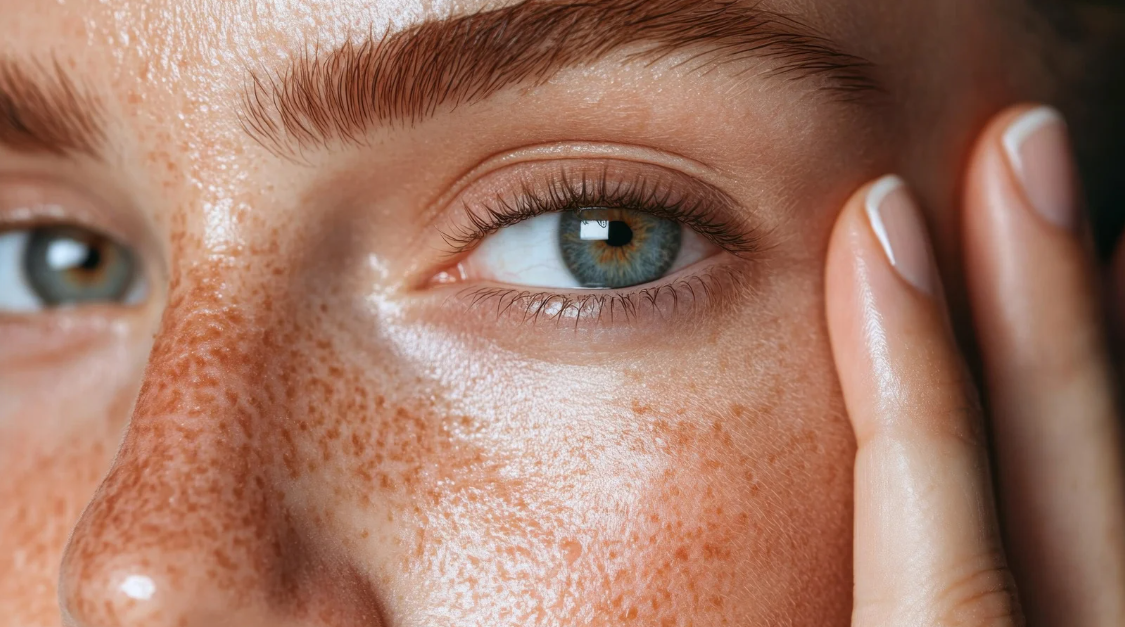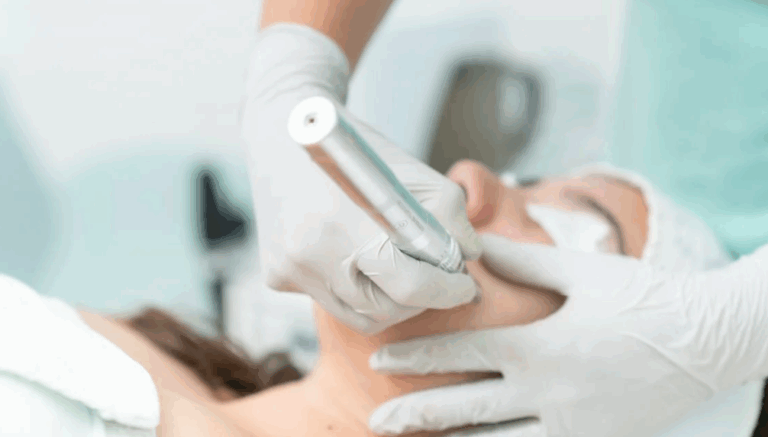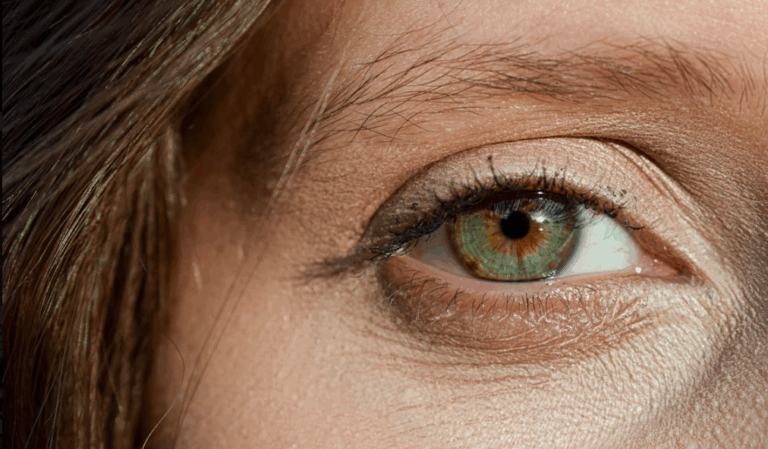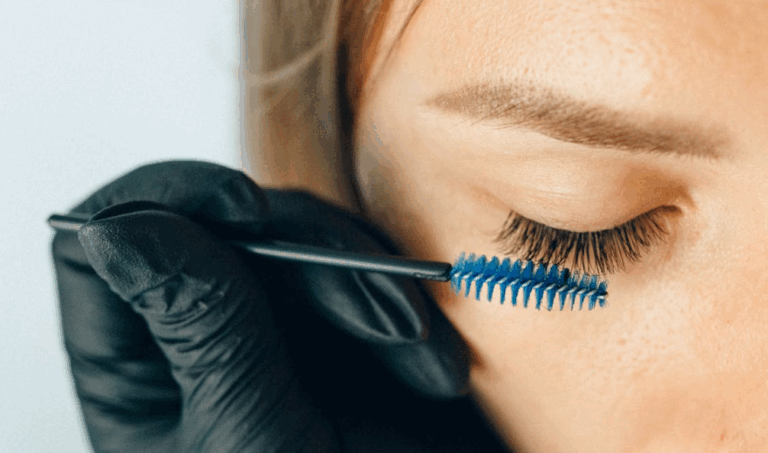Step 1: Clean the Client’s Lashes
Start by thoroughly cleansing the lashes to ensure optimal results. Apply lash-cleaning foam to the client’s eyelid, not directly on the lash line, for a more comfortable experience. Use a cashmere brush or lip wand to gently cleanse from the roots, then wipe away any residue with a damp cotton pad. Have the client tilt their head sideways to rinse off any leftover product. Always finish by rinsing with saline, as its salt content helps gently open the lash cuticles, enhancing lotion absorption.
Step 2: Prime with Easy Lift
Apply Easy Lift primer using a tapered micro brush. This product softens the lash structure and opens the cuticles without drying them, preparing the lashes for the lift. Only use Easy Lift with gentle lash and brow lift formulas like Ruthie Belle’s, and avoid using it with aggressive brands to prevent over-processing.
Step 3: Identify Growth Direction Changes
With the client looking straight ahead, examine lash growth. For downward-growing lashes, opt for round silicone shields for longer-lasting lifts. Use eyeliner to mark where lash direction changes, especially if the lash line is uneven.
Step 4: Protect Lower Lashes
Apply gel pads or tapes to cover the lower lashes and keep them isolated during the treatment. Choose pads or tape shapes that suit the client’s eye shape and your personal preference.
Step 5: Select and Apply Silicone Shields
Choose a shield based on the client’s lash length and desired lift effect. Smaller shields offer a stronger curl. Anatomical shields, made of soft silicone and shaped to mimic the eye, don’t require glue and are ideal for sensitive clients. Use glue sparingly and position shields close to the lash line. Avoid placing shields too far up the eyelid as this reduces curl effectiveness.
Step 6: Adhere Lashes to Shields and Isolate
Using a lash lift tool or Y-tool, brush lashes upward in small sections, starting from the inner corner. Ensure lashes are straight, separated, and not crisscrossed. Apply glue in 5 mm sections to avoid premature drying. Reapply glue or start over in sections if isolation needs adjustment.
Step 7: Apply Lifting Lotion
Apply the lifting lotion precisely from root to mid-length, focusing first on the inner lashes, as they process faster. Avoid applying the lotion to lash tips to prevent kinks. Processing time varies by product; follow specific brand instructions.
Step 8: Apply Fixing Lotion
Apply fixing lotion generously to neutralise the lifting lotion and lock the curl. Start again from the inner corner. Use more fixing lotion than lifting lotion to ensure full neutralisation. Improper neutralisation may cause lashes to lose shape post-treatment.
Step 9: Tint the Lashes
After fixing, apply tint for added definition. Choose a high-quality lash dye (e.g., Schwarzkopf) and avoid harsh products like henna or high-peroxide developers. Apply for 5–7 minutes, depending on the brand, and stay 1 mm away from the lash line to prevent eye irritation. Remove tint with a dry cotton swab.
Step 10: Nourish the Lashes
Finish with a professional-grade nourishing solution to hydrate and condition the lashes. Do not substitute with cheaper alternatives like castor oil. Remove excess product with a damp Q-tip.
Step 11: Detach Lashes from Shield
Use a lash foam-soaked lip wand or lash lift tool to gently detach any lashes still stuck to the shield. Avoid tugging or pulling to prevent lash damage.
Step 12: Remove the Silicone Shields
If using anatomical glue-free shields, gently lift them off the eyelid. For other shields, dissolve the glue with lash foam applied via a Q-tip, then carefully remove while supporting the skin.
Step 13: Final Clean-Up
Ensure lashes are clean, separated, and free from any glue or product residue. If needed, use a mascara spoolie dipped in lash foam to brush and clean the lashes. This final touch perfects the treatment and ensures client comfort.





 " alt="Microdermabrasion Training: What to Expect & How to Get Certified" />
" alt="Microdermabrasion Training: What to Expect & How to Get Certified" />
 " alt="Lash Lift vs. Extensions: Which Service is More Profitable?" />
" alt="Lash Lift vs. Extensions: Which Service is More Profitable?" />
 " alt="Lash Extension Training: How to Start a Lucrative Career in 2025" />
" alt="Lash Extension Training: How to Start a Lucrative Career in 2025" />